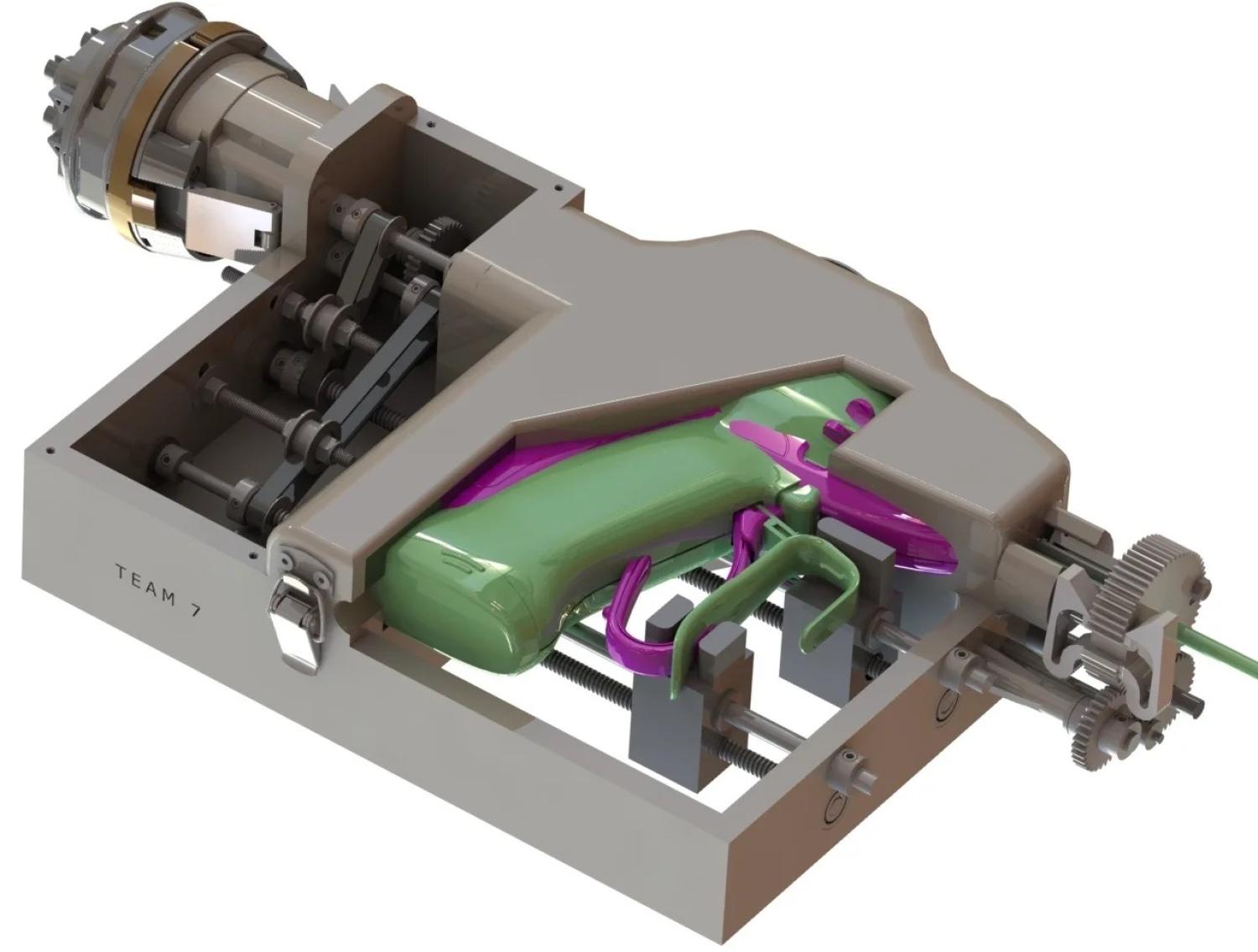Mechanical engineering students design adapter for surgical robot “Hugo”
Medtronic is one step closer to getting its robotic-assisted surgery system “Hugo” into an operating room near you, thanks to some help from a team of graduating mechanical engineering students.
New surgical devices have been developed for Hugo, but the design and regulatory process to approve can take five to seven years. To bypass these stages, there is a growing need to make preexisting surgical devices compatible with Hugo.
A group of mechanical engineering seniors at the University of Colorado Boulder have helped meet that need by designing an adapter that will allow Hugo to use two preexisting surgical devices, the Sonicision and Ligasure XP, for laparoscopic surgery.
The Sonicision and Ligasure XP use a combination of ultrasonic mechanical vibration and pressure to dissect tissue and seal blood vessels during surgery.
For both devices, a surgeon uses a rotating wheel to angle a jaw and blade at the end of a shaft. By depressing a handle, the surgeon closes the jaw that holds the tissue or blood vessel in place. They then activate the blade and ultrasonic heating by pressing a button.
But the problem is Hugo doesn’t have fingers.
“These are surgical devices that are designed to be handheld,” Project Manager Megan Conard said. “It takes a lot of out-of-the-box thinking to adapt them to be used in an entirely different way.”
For many of the team members, it was a dream project that allowed for maximum creative problem-solving.
“Nothing like this really exists, so there was no known solution,” Test Engineer James Kosco said. “Medtronic gave us a lot of freedom to design it how we thought was best.”
To begin, the team 3D printed a multi-layered mold that can house both the Sonicision and Ligasure XP, along with the mechanical components that that will help adapt the way Hugo will interface with the surgical devices.
To rotate the shaft that angles the jaw and blade, the team designed a clamp that slides onto the shaft and interfaces with a gear system that connects to one of the SIM output ports of Hugo, which then rotates the gears, the clamp and the shaft itself.
To close the jaw and use the blade, the team settled on a carriage system, which uses a toothed gear and timing belt pulley to generate the rotational motion of a lead screw that moves two carriages, with each one essentially functioning as a human finger. One carriage holding the handle recesses until the handle is depressed, thereby activating the jaw. The other carriage pushes the button that activates the blade.
“When we were able to put our adapter onto Hugo and see that it actually works, that was a big deal for our team,” Conard said. “It was very cool for us.”
The team secured a pending patent and plan to brainstorm how they want to move forward with their project after graduation.


